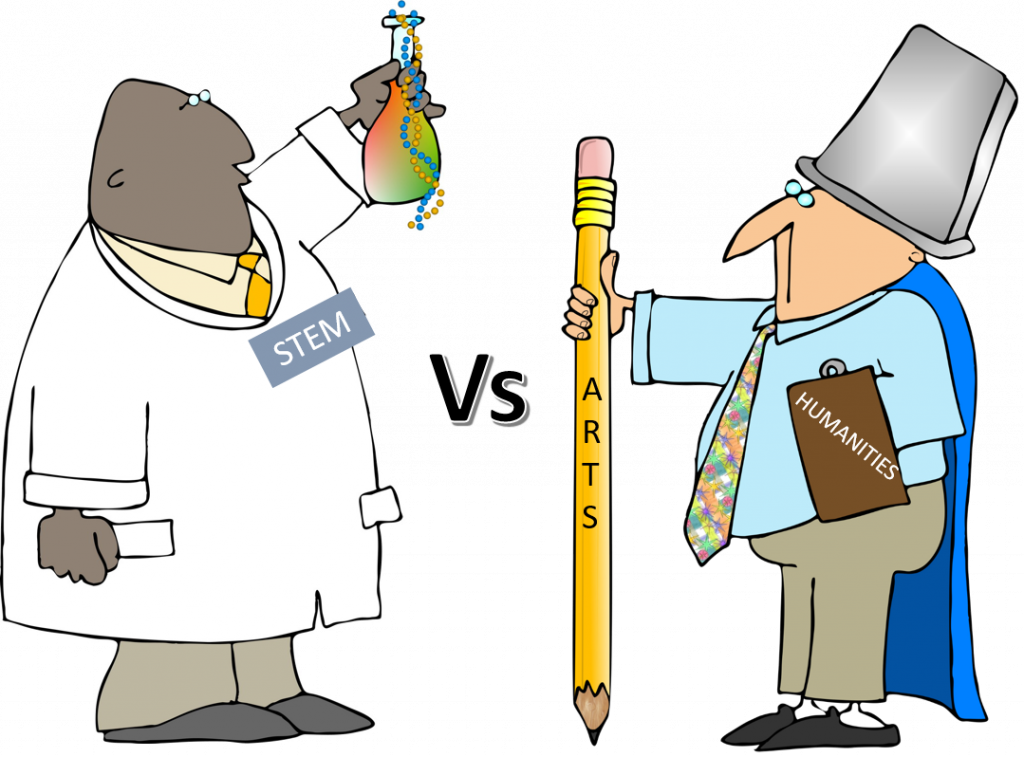Two interesting articles were recently published focusing on the relationship between education and work. In the first article, Brandon Busteed (@brandonbusteed), President of Kaplan University Partners, argues that education needs to be more closely aligned to the working world. He writes, “School currently focuses too exclusively on knowledge and not enough on skills.”[1] In the other article, Caitlin Zaloom (@caitlinzaloom), an Associate Professor of Social and Cultural Analysis at New York University, argues college is not all about job preparation for students. She writes, “The idea that the college years should be primarily about potential is not idealistic or naive; it is prescient.”[2] Like most debates, truth can be found on both sides of the argument. There is another truth which probably sparked the debate: The work environment is changing and becoming more technical. Former IBM executive Irving Wladawsky-Berger explains, “Going digital has remade the American economy and the world of work. ‘And yet, for all of the evidence that big changes are underway, surprisingly little data exists to track the spread of digital adoption,’ the Brookings Institution said in its Digitalization and the American Workforce report.”[3]
The changing work environment
According to Wladawsky-Berger, the Brookings study examined 545 occupations accounting for 90% of the U.S. workforce and came up with five major conclusions. They are:
1. The digitalization of the U.S. economy has been rapid since the early 2000s. “In 2002, 58% of jobs required low digital skills, 40% required medium digital skills and just 5% required high digital skills. A lot had changed by 2016. The share requiring low digital skills was almost cut in half, to 30%, while medium digital skills requirements rose modestly to 48% and the share of jobs requiring high digital skills more than quadrupled to 23%.”
2. The changes haven’t been evenly distributed across occupations and industries. “Many highly digital occupations became even more digital, including electronics engineers, aerospace engineers and statistical assistants. A number of previously middle-skill occupations became high-digital. … The biggest advances in digitalization were seen in medium- and low-skill occupations.”
3. Digitalization is increasing job creation and wages in occupations at the high and low ends while helping to hollow out those in the middle. “There is a distinct wage premium for digital skills among occupations requiring the same educational level. … As Massachusetts Institute of Technology economist David Autor and others have long pointed out, the increased digitalization of the U.S. economy has contributed to the polarization of employment and wage distributions over the past two decades.”
4. Digitalization varies widely across geographic areas. “Between 2002 and 2016, the mean digitalization score across all states rose by 18 to 22 points while showing extensive variations. … Metropolitan areas showed even more variations in mean digital scores. … For the foreseeable future, superstar cities offer the best job opportunities for highly educated, highly skilled workers.”
5. Digitalization is changing the skills less-advantaged workers need to secure good jobs. “Finally, the report defined midskill good jobs as those with the potential to help workers gain a well paid middle-class career without a four-year college degree.”
Is higher education broken?
Most of the Brookings study’s conclusions seem to support Busteed’s arguments that more emphasis needs to be placed on skills in our education system. He believes the education system is failing to prepare students for the changing workplace. He writes, “Over the past half-century, we’ve been incredibly effective at treating school and college as distinct elements from work and a career. Nothing is more indicative of this trend than our belief, inherent in the system we’ve designed, that the best human development arises from being in school for 13 to 17 years and then going to work for the next 45 years or so. This belief, and the system that perpetuates it, has probably never worked very well. And it’s entirely broken in today’s globally competitive and rapidly changing marketplace.” Zaloom would place Busteed among the “chorus of politicians, policy experts, and economically minded columnists” who insist “the value of college [rests primarily] in preparing young people for jobs.” She adds, “They argue that college students should spend their time in classes that will further their future careers and that colleges should offer curricula directed toward the positions that corporate America can offer graduates. One prominent argument in these discussions is that students should train in science, technology, engineering, and math — the STEM fields — rather than devote themselves to pursuits seen as less pragmatic and the development of skills portrayed as less in demand.”
Obviously, Zaloom takes umbrage with such arguments. She writes, “This morally laden political argument for yeomanship presents itself as hardheaded, but it mischaracterizes the realities of the job market that it vaunts. For one, the presumption that a liberal-arts education would prevent students from getting jobs is spurious. Graduates with a broad-based education are in demand. Writing for the National Bureau of Economic Research, the economist David J. Deming argues that employers are currently seeking skills that come from a more exploratory college education, like the one that students receive by studying liberal arts. What’s more, these workers’ ‘soft skills’ — their capacity to communicate and work with others — are in short supply. And Deming points out that the income benefits of STEM jobs are in decline.” Busteed counters, “Right now, in the U.S., we have more jobs open than people looking for work. So why aren’t we at 100 percent employment? And why do we see fresh reports suggesting that 40 percent or more of recent college graduates are underemployed or unemployed?” He believes a skills gap is the answer.
To be fair, Busteed isn’t arguing that liberal arts courses should be abandoned. Rather, he suggests a new approach to how students apply what they are learning, be they hard or soft skills. He explains, “There’s a pile of evidence about the most effective ‘education.’ Summarized, it points to relationship-rich and work-integrated learning experiences. The most important aspects include working on long-term projects that take a semester or more to complete and having a job or internship where you can apply what you are learning in the classroom. Both experiences double the odds that graduates will be engaged and successful in their work later. And graduates who had an internship during college are twice as likely to have a good job waiting for them upon graduation, too. The problem is less than one third of college graduates have had such experiences.”
On the other hand, Zaloom isn’t arguing that career and technical education (CTE) shouldn’t be pursued. She admits, “[CTE] in both high school and at the college level can be a path to a good income for those who can’t go to college, or wouldn’t do well there. … But CTE denies students the benefits of a broad education that can’t be measured in dollars, and the arguments for it also overlook how limited the economic value of the skills taught may turn out to be.” She concludes, “Today’s students need universities and colleges that will help them navigate a world where constant changes are the norm and where learning how to adapt is the central problem of living and of citizenship. The idea that the college years should be primarily about potential is not idealistic or naive; it is prescient.”
Concluding thoughts
I agree with Zaloom that well-rounded individuals need to understand and appreciate history, art, civics, and other humanities-related subjects. I also agree with Busteed that America’s future depends on maintaining a robust, full-employment economy. These positions are not mutually exclusive. A few years ago, I, along with a few colleagues, founded The Project for STEM Competitiveness — a project-based, problem-solving approach to STEM education helping schools near where we live demonstrate to students that STEM subjects can be fun and applicable in their lives. We believe learning how to solve everyday problems will help students in every aspect of their lives by teaching them to think critically about how they can overcome challenges. Working together in group projects can help students learn soft skills as well as understanding larger social problems that need addressing. Busteed concludes, “Educational institutions will increasingly move toward applied and work-integrated models of learning. And employers will increasingly weave learning and retraining into the fabric of the workplace. This evolution can’t happen fast enough.” What we must not forget is that people need both hard and soft skills on their life’s journey.
Footnotes
[1] Brandon Busteed, “We Desperately Need a Merger between Education and Work,” Scientific American, 9 September 2019.
[2] Caitlin Zaloom, “College Is Not Just Job Prep,” The Atlantic, 10 September 2019.
[3] Irving Wladawsky-Berger, “The Digitalization of the American Workforce,” The Wall Street Journal, 6 September 2019.





